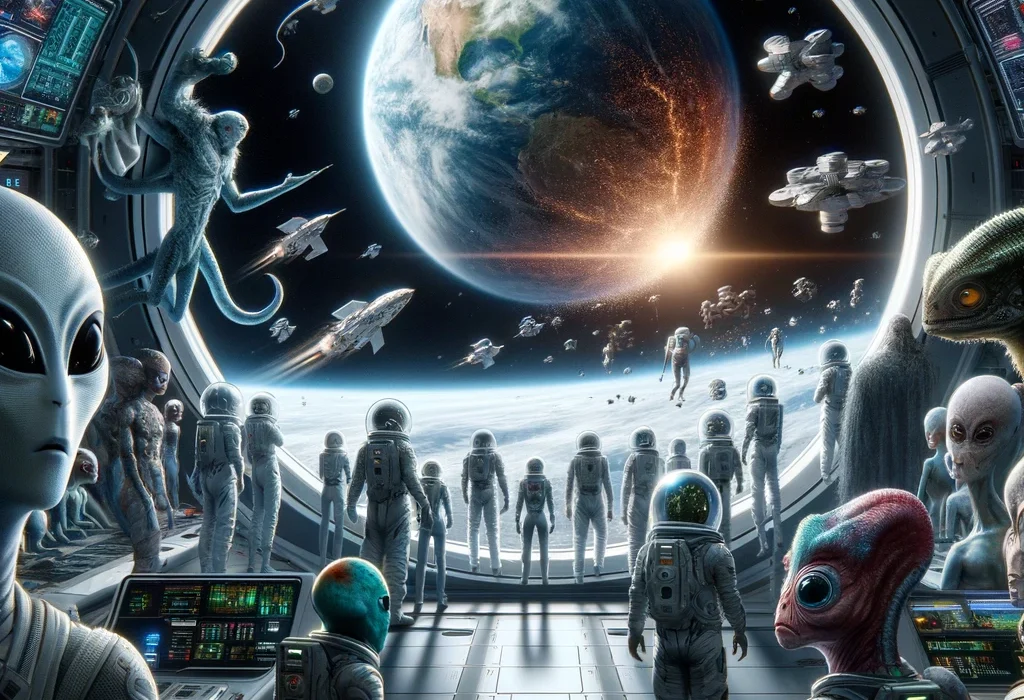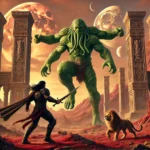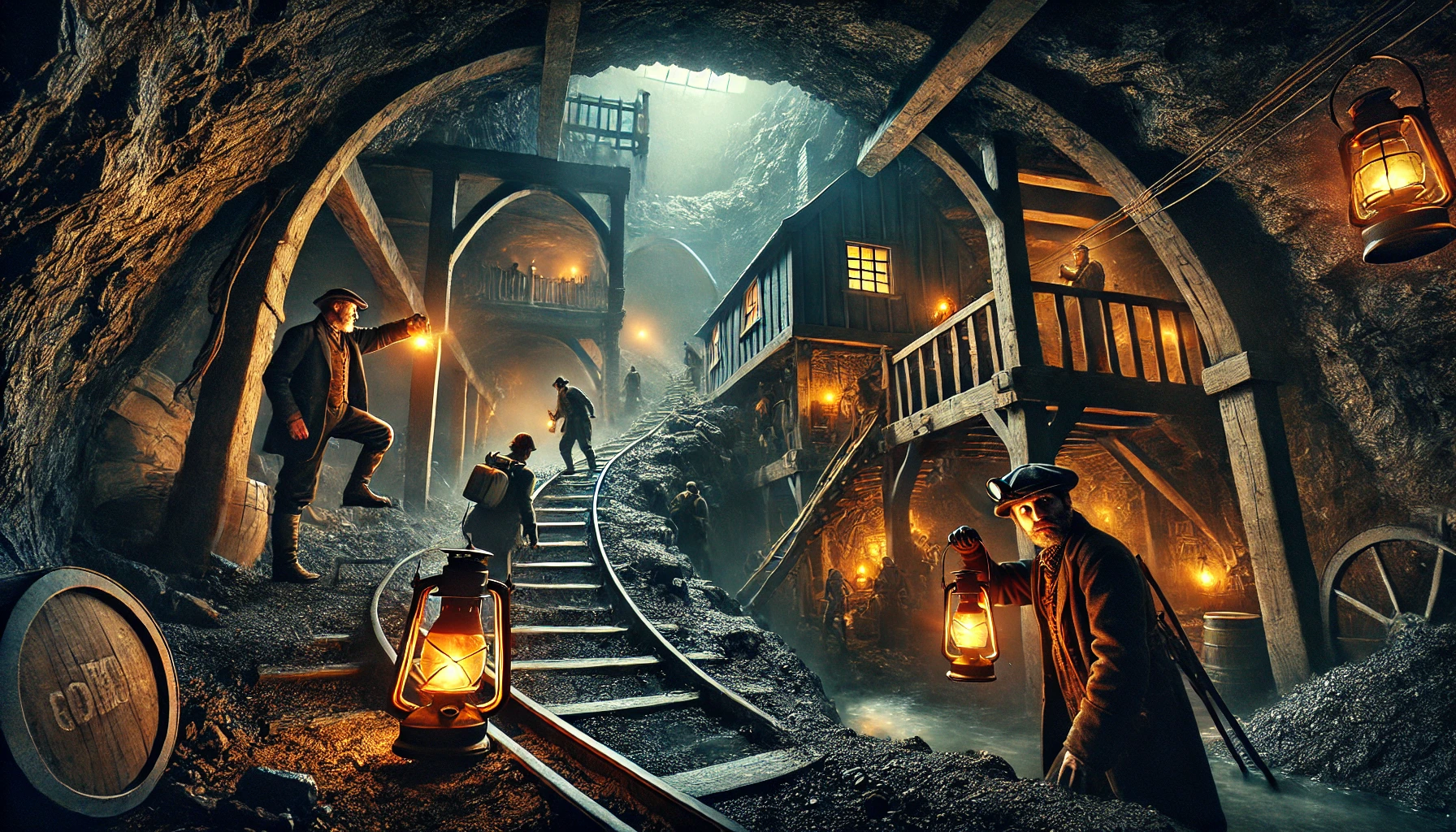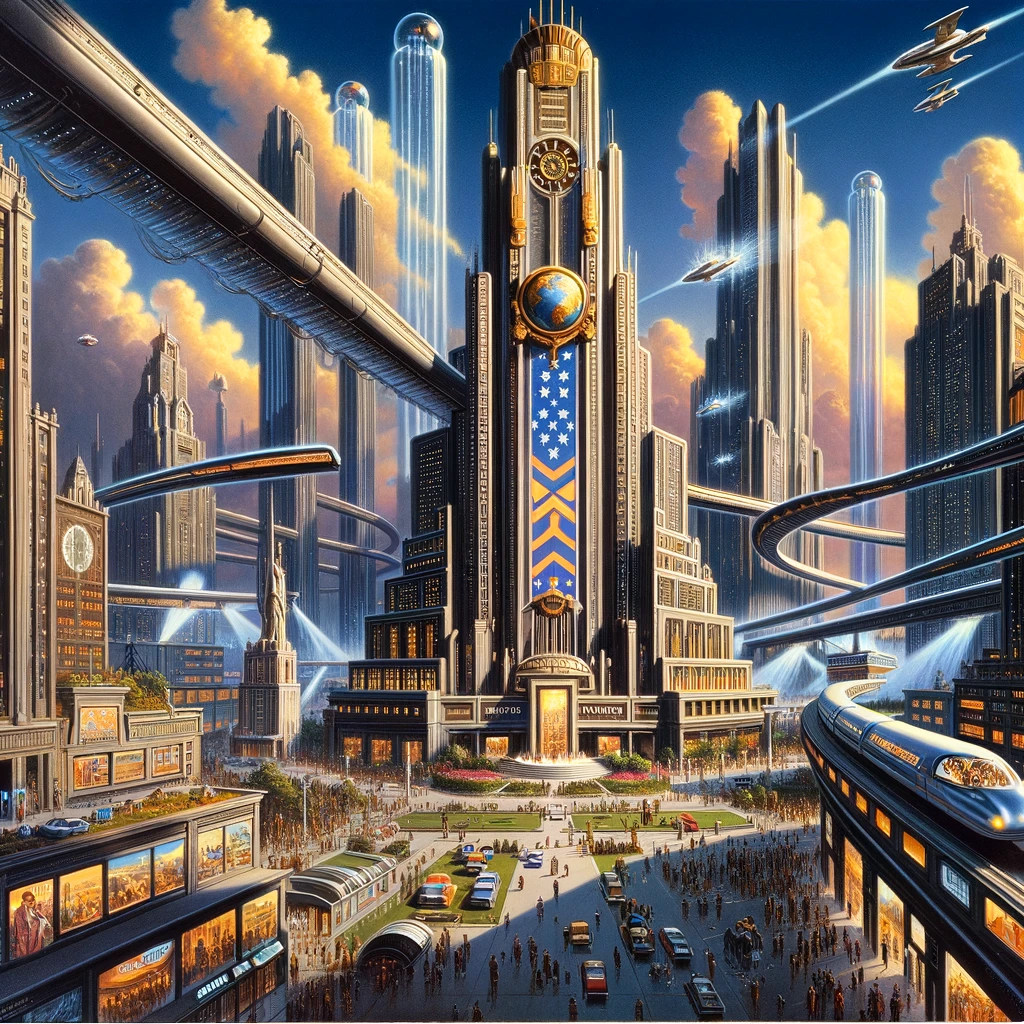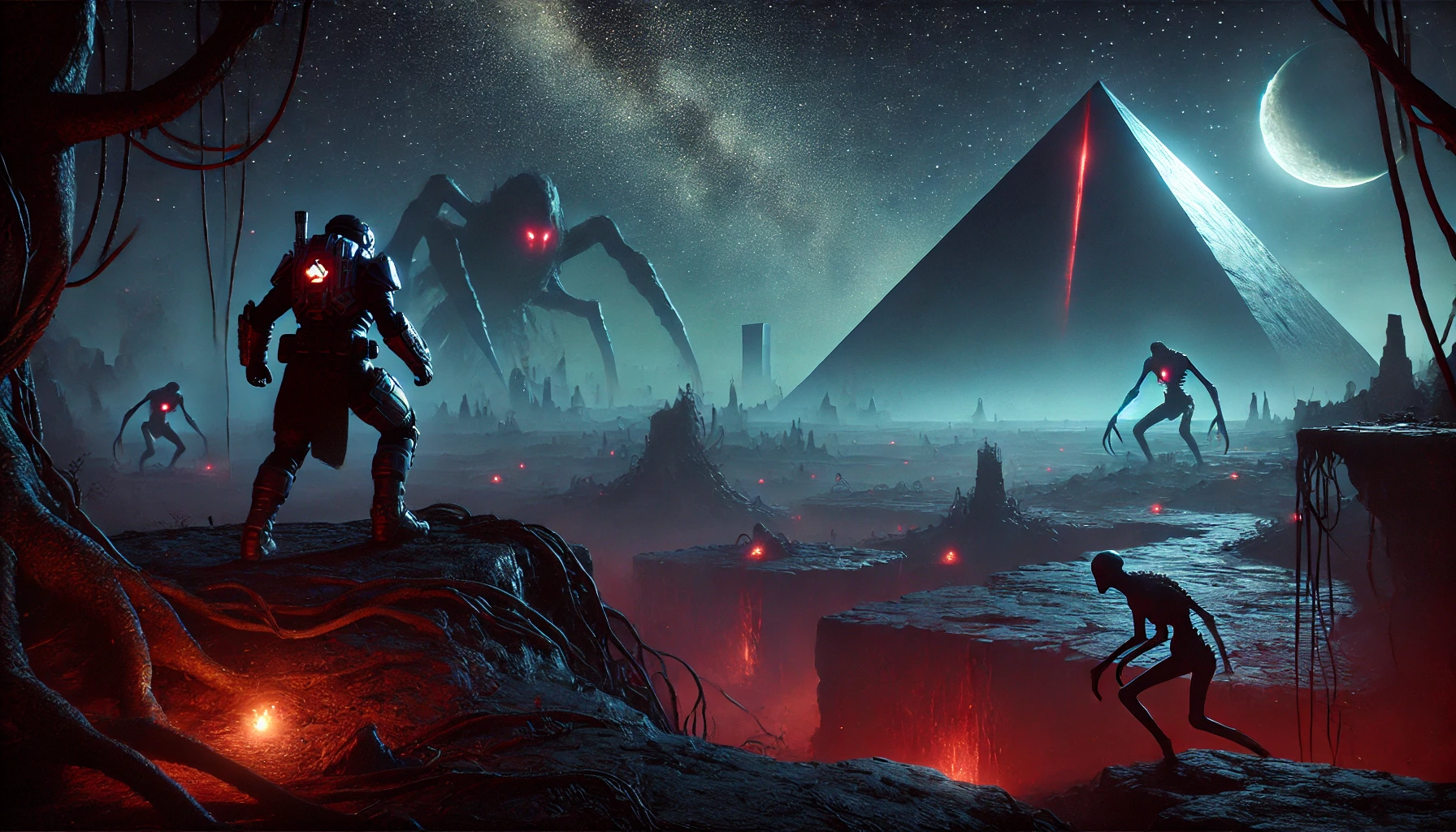“Trek’s End,” a short science fiction story by John Walker, was published in 2003. The narrative is a first-person account of an astronaut who witnesses the catastrophic destruction of Earth. The story explores themes of interstellar conflict, the fragility of humanity, and the consequences of our aspirations to reach the stars.
Plot Summary
A pilot was on his third mission to GEOCan Asia, a communications platform stationed in geosynchronous orbit above Singapore. The ferry he piloted was loaded with cargo and technicians from the GEOSPACE Low Earth Orbit base. These platforms formed the backbone of GEOSPACE’s communications network, a company that rose to prominence following the collapse of traditional government-run space programs. The initiative marked a shift from bureaucratic control to private enterprise, heralding a new era of space exploration.
The pilot, named Peter, had always been passionate about space. After changing his major to aerospace engineering and dedicating years to working his way up in GEOSPACE, he finally achieved his dream of making it off-planet. Despite his accomplishments, he still aimed higher, hoping to secure a position on a Trans-Atmospheric Transport (TAT) and one day command a lunar ferry. While the technicians worked on installing new signal processors and amplifiers inside the GEOCan, Peter studied for his upcoming interview for the TAT position. The view of Earth outside the cockpit window was a constant, alluring presence, reminding him of both his achievements and the fragility of life below.
As he was absorbed in his studies, Peter noticed something unusual in the distance. An impossibly bright star appeared, moving towards Earth at an unprecedented speed. It wasn’t a star; it was an object hurtling towards the planet at an incredible velocity. In a matter of seconds, it crossed the vast distance between space and Earth, impacting near the equator. The collision was catastrophic. A plume of plasma erupted from the point of impact, sending shockwaves across the globe. The oceans vaporized into steam, the atmosphere turned a blinding white, and the planet seemed to shudder from the force. The Earth was being torn apart, its biosphere obliterated in an instant.
Peter quickly called the technicians to the flight deck. Together, they watched in horror as their home world was destroyed. Communication links with Earth and other satellites were lost within moments of the impact. The devastation was total. Yutaka, one of the technicians, calculated that the impactor was traveling at ten percent of the speed of light. Such velocity was beyond anything conceivable within the solar system or even the galaxy. The only explanations were either an unfathomable stroke of cosmic bad luck or a deliberate act of aggression by an unknown force.
For three days, Peter and the technicians remained in orbit around the remnants of Earth. They monitored the situation, performed routine checks, and scanned for any signs of life or signals. Nothing. The Earth, now a featureless white sphere surrounded by a growing ring of debris, offered no answers. The crew struggled with the reality that they were the last humans, stranded in the void of space, with no clear idea of what to do next.
On the fourth day, an alien ship arrived. It appeared out of nowhere, a streak of light that suddenly halted twenty meters from their ferry. The craft was a perfect sphere, a hundred meters in diameter, with a constantly shifting fractal surface. A tube extended from the alien vessel to the ferry’s front docking port, initiating an automatic docking sequence. Peter and the others were startled by a voice over the intercom, speaking in perfect midwestern American English, asking them to open the hatch.
When the hatch opened, five beings floated through, each vastly different from the other. Two of them resembled classic depictions of extraterrestrials with almond-shaped black eyes and gracile limbs, but with leathery ears. Another pair was lizard-like, standing upright with no visible tail, while the fifth being was adorned with tentacles on its face, exuding a pungent odor. They addressed the humans in their native languages, revealing an unsettling familiarity with human communication. The leader, one of the grey-like beings, approached Peter, calling him “captain,” stating that one person speaks for all on human ships.
Peter confronted the aliens, demanding to know if they were responsible for the destruction of Earth. The leader confirmed that they were. Earth had been destroyed because it presented an unprecedented risk to peace in the galaxy. The aliens explained that they had been monitoring Earth’s electromagnetic emissions and had interpreted humanity’s fascination with interstellar conflict, particularly the television series “Star Trek,” as evidence of actual technological advancements and aggressive intentions. Believing that humanity possessed or was on the verge of developing dangerous technologies like warp drive and cloaking devices, they saw Earth as a threat that had to be neutralized to maintain galactic peace.
Vasily, a technician and ardent “Star Trek” fan, attempted to explain that the series was mere fiction, not a representation of reality. However, the aliens, unable to distinguish between fiction and reality in the context of human culture, had taken these broadcasts as a factual portrayal of humanity’s capabilities and intentions. Convinced they had acted in self-defense to prevent a future conflict, they obliterated Earth to preserve what they saw as a fragile galactic peace.
As the crew grasped the magnitude of this misunderstanding, they realized the tragic irony of their situation. Humanity’s dreams of exploring the stars and the stories created around that dream had led to their ultimate destruction. The crew, now the last remnants of the human race, were left adrift in an indifferent universe, their home world reduced to a lifeless, desolate sphere.
Main Characters
The Narrator (Peter): A passionate and ambitious astronaut who has long dreamed of space travel. He provides a firsthand account of Earth’s destruction and the subsequent encounter with aliens. His background in aerospace and his disillusionment with traditional space programs led him to a career at GEOSPACE, where he becomes a witness to the end of humanity.
Vasily: A technician aboard the interorbital ferry and an ardent “Star Trek” fan. His emotional response to the aliens’ revelation highlights the contrast between humanity’s idealistic portrayal of interstellar peace and the harsh reality of their situation.
Yutaka: Another technician, Yutaka is more analytical and rational. He quickly deduces the nature of the impactor that destroys Earth, demonstrating a calm, scientific approach to the catastrophe.
The Aliens: Five diverse extraterrestrials who appear after Earth’s destruction. They represent a galactic peacekeeping force that views humanity as a significant threat due to our potential for interstellar conflict.
Theme
The Fragility of Humanity: The story underscores how vulnerable humanity is in the vast, dangerous universe. Despite our technological advancements and dreams of space exploration, we are still at the mercy of greater forces beyond our control.
Misinterpretation and Irony: There is a deep irony in the aliens’ perception of humanity. They have acted to prevent a threat based on a misinterpretation of human culture, specifically mistaking science fiction (“Star Trek”) for reality. This highlights the dangers of misunderstanding and the consequences that can arise from it.
The Cost of Peace: The aliens justify their actions as necessary for maintaining galactic peace, raising ethical questions about the price of peace and the morality of preemptive actions against perceived threats.
Writing Style and Tone
John Walker employs a straightforward, almost clinical narrative style that suits the story’s science fiction setting. The first-person perspective allows readers to experience the narrator’s shock and resignation firsthand, creating an intimate and immersive atmosphere. Walker’s prose is concise and unembellished, which helps convey the stark reality of the events and the narrator’s pragmatic mindset.
The tone of “Trek’s End” is somber and reflective, marked by a sense of inevitability and futility. The narrator’s detached recounting of the catastrophic events emphasizes the enormity of the disaster and the insignificance of individual human experiences in the face of cosmic forces. This tone is further reinforced by the ironic twist at the end, which leaves readers contemplating the implications of humanity’s aspirations and the misunderstandings that can arise from them.
We hope this summary has sparked your interest and would appreciate you following Celsius 233 on social media:
There’s a treasure trove of other fascinating book summaries waiting for you. Check out our collection of stories that inspire, thrill, and provoke thought, just like this one by checking out the Book Shelf or the Library
Remember, while our summaries capture the essence, they can never replace the full experience of reading the book. If this summary intrigued you, consider diving into the complete story – buy the book and immerse yourself in the author’s original work.
If you want to request a book summary, click here.
When Saurabh is not working/watching football/reading books/traveling, you can reach him via Twitter/X, LinkedIn, or Threads
Restart reading!


